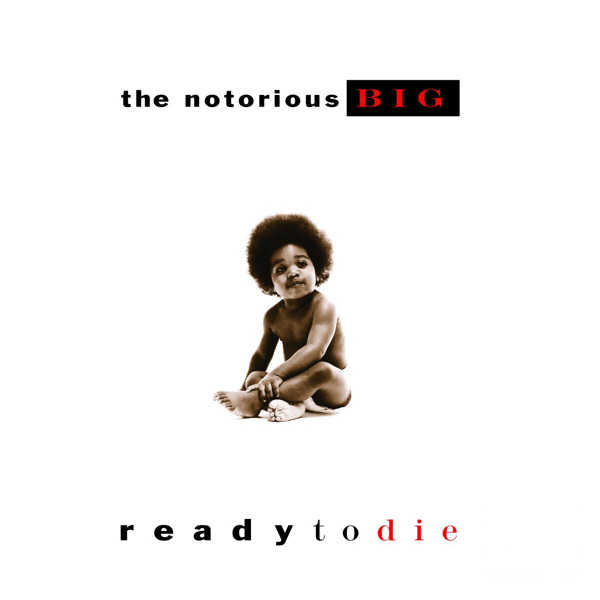

Anyway, now that I’ve gotten that info out the way, let’s finally talk about Ready to Die…

The KRS-One Marathon will include all of the BDP albums, so stay tuned for that next Monday. There are some tracks here and there from the posthumous records that I do enjoy to some extent, but as full length projects RTD & LAD are the only ones I’m interested in covering here. Do people even consider that part of his discography? I don’t know… Anyway, since this isn’t really much of a marathon, I decided it’d only be fair to do a KRS-One Marathon after I cover Ready to Die & Life After Death. I flew past that milestone a couple weeks ago, but here’s the thing: I’m not planning on covering any of the posthumous projects, nor am I interested in doing that first Junior M.A.F.I.A. I waited until I reached 500 followers on Twitter to do my 2Pac Marathon, so I figured it’d make sense to do this after reaching 1000 followers. RELATED: Despite the Notorious B.I.G.People have been requesting a Biggie Marathon pretty much ever since I first started doing them in 2015. Most people don’t dare to cross that line anymore and risk the loss of talent that could change lives for the better. Legitimate beef borne of actual animosity and not the predictable machinations of attention-starved pop stars well past their prime is now a rarity. The rap world hasn’t been the same ever since. Life After Death was an excellent follow-up, but it’s forever tinged with the fact that its genius creator never got to receive the plaudits for his work. Even as B.I.G tried to make amends after Shakur’s death, it was too late. The rhetoric on diss records followed them into real life. The road to Biggie’s second album was mired by the increasingly tense beef between the East and West coasts, with himself and Tupac the main protagonists of the rivalry. Some of the production does not hold up well, but the emotional potency is timeless. Ready to Die is vulnerable and defiant, clever and morose. Songs like the title track, “Everyday Struggle”, and the closing “Suicidal Thoughts” are the most obvious examples of his anguish about his life, but that energy lingers through the whole project. “Big Poppa” and “One More Chance” married his gift of gab with a comedic tone that revealed his lighter side.īut the rest of the album is an exploration of the paranoia and self-loathing that often filled his days. “Juicy” was made at the behest of executive producer Puffy, but became an iconic single thanks to Wallace’s loving ode to the underground rap that inspired him and his pride at being rewarded for his creativity for the first time in his life. Ready to Die’s three singles are all certified gold or platinum. was a smart kid that had (or liked) to do dumb things, the record suggested, itself a comment on the how genius gets sharpened when faced with obstacles, and an affirmation of rap as a platform for such genius to be realized, and monetized,” said Matthew Trammell in a Pitchfork review commemorating the album’s 20th anniversary. Ready to Die details the totality of his experience as a youthful drug dealer in New York with dreams of leaving the life behind should he ever get the chance, while also acknowledging the claustrophobia inflicted on poor Black kids in America. “Few have ever been as open in detailing their criminal past as Biggie Smalls, and none have ever been as clear about the pain they felt at the time” wrote Toure in a New York Times profile of Biggie weeks after the album’s release. “ Ready to Die is the strongest solo rap debut since Ice Cube’s Amerikkka’s Most Wanted” concludes a Rolling Stone interview from the time. Words like ‘classic’ or ‘legendary’ are probably overused these days, but it was readily apparent when Ready to Die dropped in 1994 that it was something special. It was real, but it was real angry.” The album was an instantly seminal event in hip-hop history My mentality was more getting paper, not caring about nothing else, just wanting to get mine, y’know? I got the record deal, and when I started doing Ready to Die, there was a lot of anger. “Just being in a situation with my mom, working, going to school, leaving me open to in different things, you know what I’m saying? It just left me kind of stuck. “I felt like I was already dead”, he explained to Rap City’s Joe Clair in his last ever interview.

After being cajoled by his friends to pursue his artistry more seriously, he began working on what would eventually become Ready to Die, taking his conflicted feelings about his past decisions into the booth with him. He made his first demo tape, Microphone Murder after he got out.
Biggie smalls ready to die full album crack#
A drug bust in North Carolina for dealing crack cocaine put him in jail for nine months. Wallace made a few thousand dollars a week at his “peak”, but the ordeal weighed on his soul.


 0 kommentar(er)
0 kommentar(er)
